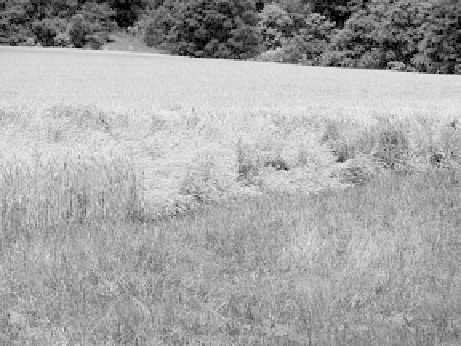Agriculture Reference
In-Depth Information
Water for irrigation from all sources, that is, rivers, streams, lakes, and aquifers,
contains salts. The salt content may be relatively low or may be a little high, but the
water is still suitable for irrigation. In either case buildup of salt in the soil will
occur if this water is used for irrigation and steps must be taken, usually by leaching
and drainage, to remove excess salts before they buildup to levels that will inhibit
plant growth.
Less common but still important in some areas is precipitation other than rain such
as snow, ice, and hail. In some areas snow is a positive weather factor in that it provides
water to plants either directly by melting into the ground or, when it falls in mountains,
it melts providing water for streams and rivers and is then available for irrigation in
valleys or other lower lying areas. Wet snow, which sticks to plants, can on the other
hand cause damage by breaking leaves and limbs, thus causing a loss of productivity.
Precipitation in the form of hail can occur in areas that do not get cold enough to
have snow or ice storms and often occurs in warm seasons when crops are actively
growing. Hail can rip leaves and damage both vegetative and fruit portions of crops.
In some extreme cases it may even destroy the whole plant.
Wind, usually accompanying precipitation, can cause two types of damage. For
crop plants nearing maturity, it can cause the plants to fall to the ground. This is
called lodging (Fig. 8.16) and usually either prevents harvest or results in a significant
decreased yield.
Very windy conditions during pollination can cause pollen to be dispersed such
that it does not reach the proper receptors, resulting in very poor yields. Fortunately,
the time period over which crops are susceptible to this type of damage is limited
and the damage does not often occur. A summation of wind conditions affecting
crop production is given in Table 8.3.
Data given in Table 8.3 are general in nature. Many areas of the world will have
either higher or lower average temperatures and rainfall. Also these factors can
Figure
8.16.
Lodging of nearly mature wheat.









